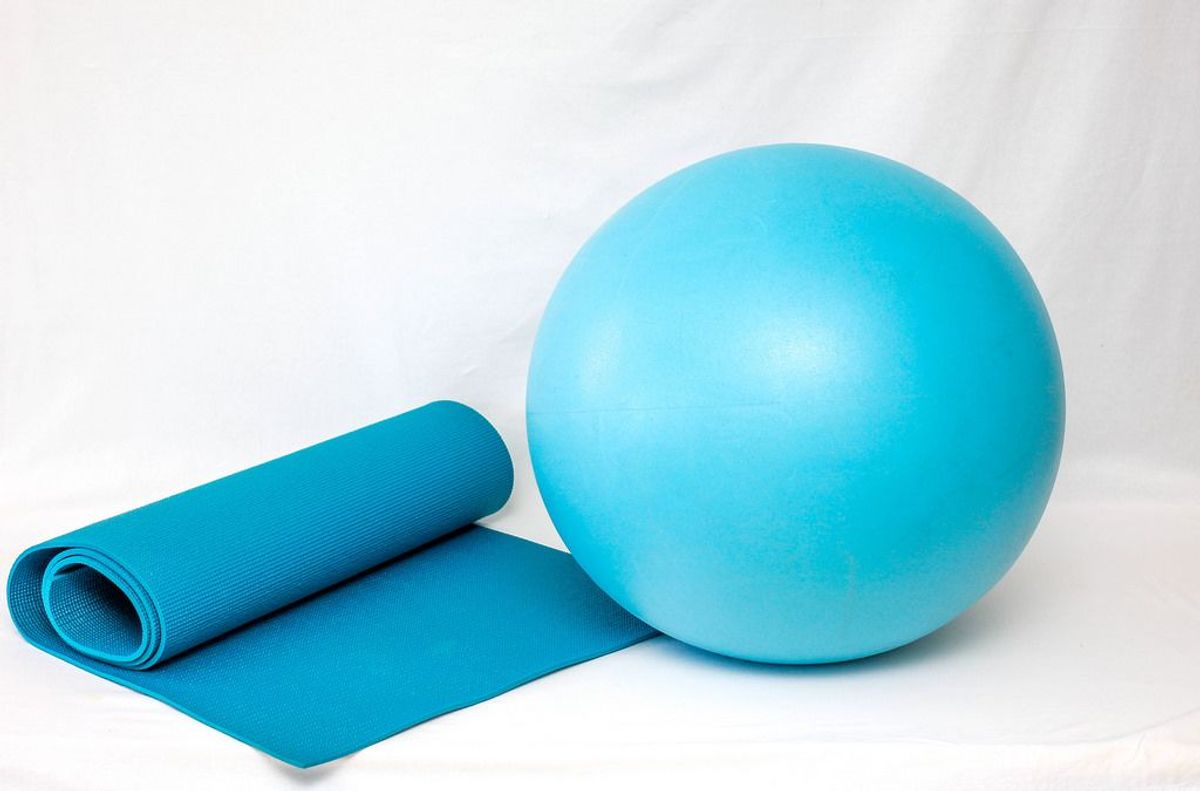
The Ultimate Guide to Choosing the Right Yoga Mat Size
Choosing the right yoga mat size is crucial for enhancing your yoga practice, ensuring comfort, and preventing injuries. This guide delves into various aspects to consider when selecting the ideal yoga mat, from dimensions and materials to portability and surface texture. Understanding these factors will help you make an informed decision tailored to your body type, yoga style, and personal preferences.
Key Takeaways
- Understanding standard dimensions and variations helps in selecting a mat that fits your height and reach.
- The thickness of a yoga mat can significantly affect your comfort and the effectiveness of your practice.
- Material choice, such as rubber, PVC, or eco-friendly options, impacts the mat's feel, durability, and environmental footprint.
- Portability is key for yogis on the go, influencing the choice between compact and full-size mats.
- The surface texture and grip of a yoga mat are critical for maintaining balance and stability during poses.
Understanding Yoga Mat Dimensions
Standard Sizes and Variations
Yoga mats typically come in a variety of sizes to accommodate different needs. The most common size is 68 inches long and 24 inches wide, but variations exist, such as 72 inches or even 84 inches for taller individuals. Choosing the right size is crucial for comfort and effectiveness in practice.
Thickness and Its Impact on Practice
The thickness of a yoga mat can greatly affect your practice. Standard mats are about 1/8 inch thick, providing a good balance between cushioning and stability. Thicker mats, up to 1/4 inch, offer more cushion but can make balancing poses more challenging. Thickness is a key factor in how much support and comfort the mat provides.
Length and Width Considerations
When selecting a yoga mat, consider both the length and the width that best fits your body type and yoga practice. For yogis that run between 5'6” and 6', a 72” yoga mat is recommended. For those over 6', an 84”-85” mat may be more appropriate to accommodate their height. This ensures that the entire body stays on the mat during various poses, enhancing safety and comfort.
Factors Influencing Yoga Mat Size Choice
Body Type and Size
Choosing the right yoga mat size often starts with considering the practitioner's body type and size. A mat that is too small can restrict movement and comfort, while one that is too large may be cumbersome in a crowded class setting. It's essential to find a balance that accommodates height and body shape.
Yoga Style and Intensity
The type of yoga practiced significantly influences mat size choice. High-intensity styles like Ashtanga or Vinyasa require mats that offer ample space and grip to handle dynamic movements. Conversely, practices such as Yin or Restorative yoga might prioritize comfort, suggesting a thicker mat.
Personal Comfort Preferences
Personal comfort is paramount when selecting a yoga mat. Some yogis prefer extra padding to protect joints, while others might choose a firmer surface for better stability. Experimenting with different sizes and thicknesses can help determine what feels best for an individual's practice.
Material Considerations for Yoga Mats
Rubber vs. PVC vs. TPE
When selecting a yoga mat, the material is a crucial factor to consider. Rubber, PVC (Polyvinyl Chloride), and TPE (Thermoplastic Elastomer) are the most common materials. Rubber mats offer excellent grip and are eco-friendly, but can be heavy. PVC mats are highly durable and provide good support, but they are not biodegradable. TPE mats are a more eco-friendly alternative to PVC, offering a balance of support and sustainability.
Eco-Friendly Materials
The trend towards eco-friendly yoga mats is growing as practitioners seek to align their yoga practice with environmental values. Mats made from natural rubber, organic cotton, or jute are popular choices. These materials are renewable and often come with minimal processing, reducing their environmental impact. Choosing an eco-friendly mat not only supports the environment but also enhances the spiritual and ethical aspects of yoga practice.
Durability and Maintenance
The longevity of a yoga mat depends significantly on its material and how well it is maintained. Rubber and cotton mats require more careful cleaning to prevent degradation, while PVC mats are easier to clean and more resistant to wear. It's important to consider how often you practice and the conditions in which you use your mat, as these factors will influence the type of mat that best suits your needs.
The Role of Portability in Yoga Mat Selection
Travel-Friendly Yoga Mats
For yogis on the go, choosing a travel-friendly yoga mat can make a significant difference. These mats are typically lighter and thinner, making them easy to fold or roll tightly to fit into luggage or a backpack. The key is to find a balance between portability and comfort.
Weight and Ease of Transport
The weight of a yoga mat can greatly influence your decision, especially if you travel frequently or walk to yoga classes. Lighter mats are easier to carry, but they may not offer the same level of support and cushioning as heavier mats. It's important to consider both the weight and the material when selecting your mat.
Compact vs. Full-Size Mats
Choosing between a compact and a full-size mat depends largely on your personal needs and the type of yoga you practice. Compact mats are great for travel or limited storage space, while full-size mats provide more surface area for a variety of poses and comfort.
Choosing the right size and weight for your yoga mat is crucial for comfort and stability during practice. Consider body type, preferences, and balance between portability and stability.
Evaluating the Surface and Texture
Grip and Slip Resistance
The surface of a yoga mat plays a crucial role in ensuring safety and effectiveness during practice. Mats with high grip and slip resistance are essential, especially for styles of yoga that involve dynamic movements or higher levels of perspiration. Look for mats labeled as 'non-slip' or those with tactile patterns to enhance grip.
Texture Varieties and Their Benefits
Different textures cater to varying preferences and needs. A smoother surface might be comfortable for gentle yoga, while a textured mat provides better traction for more vigorous styles. Texture also affects how the mat feels against the skin, which can be a critical factor for those with sensitive skin.
Impact on Balance and Stability
A mat's texture can significantly influence your balance and stability during yoga poses. A well-textured mat helps in maintaining poses without slipping, which is particularly important for balance-focused practices like Vinyasa or Ashtanga. Consider the firmness and how it interacts with the texture to find the perfect balance for your practice.
Specialty Yoga Mats and Their Unique Sizes
Mats for Hot Yoga
Hot yoga requires mats that can handle intense heat and moisture without slipping. Look for mats specifically designed for hot yoga with features like moisture-wicking and antibacterial properties. These mats often come in slightly different sizes to provide extra surface area for sweat management.
Extra Long Mats for Taller Practitioners
Taller yogis often struggle with standard mat sizes. Extra long mats, which can be up to 84 inches in length, ensure that everyone has ample space to practice comfortably. This adjustment in size helps in maintaining proper alignment and balance during poses.
Innovative Designs for Specific Needs
The yoga industry has seen a surge in innovative mat designs tailored to enhance the practice for various needs. From mats with alignment markers to those with varying thickness zones, these designs cater to a broad range of yogis. Such mats may vary significantly in size and shape, depending on their specific features.
Explore the world of specialty yoga mats at Yune Yoga, where we offer a diverse range of unique sizes and styles to enhance your practice. Whether you're looking for eco-friendly options, travel-friendly foldable mats, or beautifully designed collections, we have something to suit every yogi's needs. Visit our website to discover the perfect yoga mat for you and enjoy free shipping on orders over $100.
Conclusion
Choosing the right yoga mat size is essential for enhancing your practice and ensuring comfort and safety. By considering factors like your height, the type of yoga you practice, and your personal preferences for cushioning and portability, you can select a mat that best suits your needs. Remember, the right mat can make a significant difference in your yoga experience, helping you to focus more on your poses and less on discomfort. Take the time to assess your needs and try out different mats if possible, to find the perfect match for your yoga journey.
Frequently Asked Questions
What are the standard dimensions of a yoga mat?
Standard yoga mats typically measure about 68 inches long and 24 inches wide, with a thickness ranging from 1/16 inch (ultra-thin) to 1/4 inch (thick).
How does thickness affect a yoga practice?
Thicker mats provide more cushioning and are ideal for restorative or therapeutic practices, while thinner mats offer better stability for balance poses and high-intensity styles.
Should I choose a different mat size based on my body type?
Yes, larger individuals may prefer a wider or longer mat for comfort and adequate space, while smaller individuals might opt for a standard size.
What are the benefits of eco-friendly yoga mats?
Eco-friendly mats, often made from materials like natural rubber or jute, are biodegradable and non-toxic, making them healthier for both the user and the environment.
What should I consider when looking for a travel-friendly yoga mat?
For travel, look for lightweight, foldable mats that are easy to carry. Some mats are designed to be compact without sacrificing grip or cushion.
How do I choose the right mat for hot yoga?
For hot yoga, choose a mat with excellent sweat absorption and grip to prevent slipping. Mats designed specifically for hot yoga often feature moisture-wicking properties.


